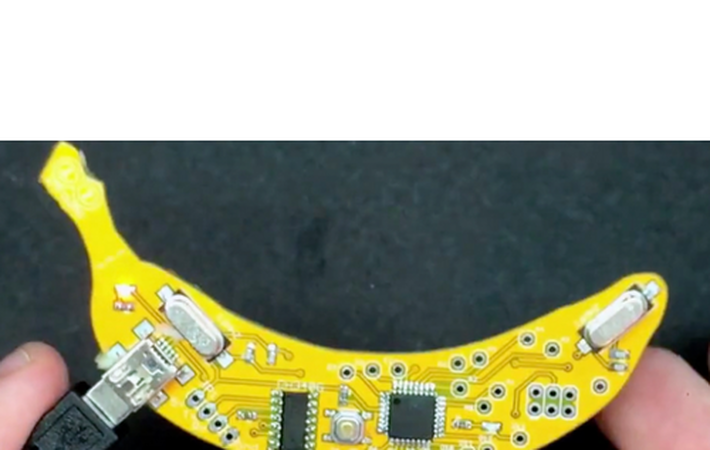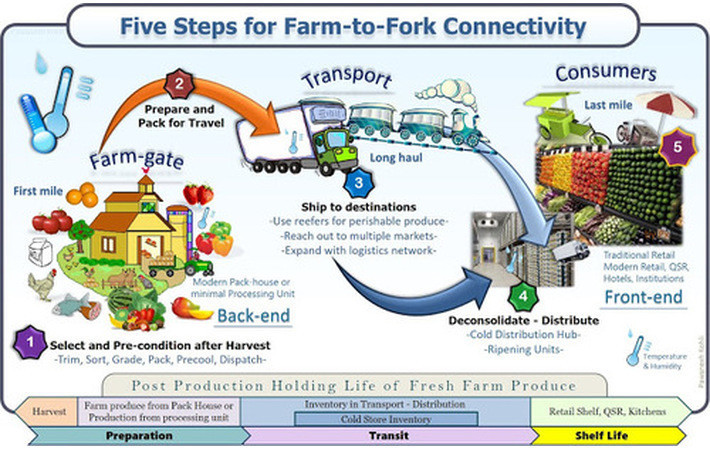
Published on 11/07/2016 | Operations
Last month I was helping my daughter Pari with her school assignment related to a trivial topic – Banana facts & benefits. That’s when I realized that on an average humans consume 12 Kg of bananas per year. I also learnt that Ecuador, which lies in the northwestern part of South America, is the largest banana exporting country in the world. As per Food and Agriculture Organization of the United States, four countries, namely Ecuador, Belgium, Colombia and Costa Rica make up over 50% of the total value of banana exports worldwide.
On the other hand, four Asian countries, namely India, China, Philippines and Indonesia together contribute to 50% banana production worldwide. Yet none of these top banana producing nations show up in the top 15 exporter’s list and it’s not just because these nations are also among the largest banana consuming nations but because of food spoilage!
A major cause of food loss is due to mishandling and supply-chain inefficiencies. Ironically, evidence suggests that these losses tend to be highest in those countries where the need for food is greatest. About 25-40% of the banana produce gets wasted in India alone and nearly 45% is wasted worldwide!
Can we use technology to minimize this colossal food loss? The answer is YES. In this blog I’ll discuss how we can leverage the Internet-of-Things (IoT) solution in transportation and logistics to reduce operational expenses, bring efficiency in the overall supply-chain, reduce farm to fork transportation time all leading to the reduction in food spoilage.

Fresh produce or perishable goods often need to be stored at constant temperature with proper ventilation in order to maintain desired humidity. Real-time information on the state of the perishable goods is a key requirement for entire supply-chain – it’s useful for the wholesale vendor, the transport and logistics company as well as for the distributor. Banana is one such example, in order to preserve its freshness one need to maintain 62-70 degrees Fahrenheit (16-22 degrees Celsius) temperature range and 85-95% humidity during transportation.
Internet-of-Things or IoT ecosystem: The ability of sensors to send continuous data opens up new application areas. Sensors make it possible to continuously track and transmit data such as temperature, humidity and gas content all through the supply-chain.
These additional sensors or connected devices is leading to unprecedented explosion of devices that are connecting to the internet forming the Internet-of-Things or IoT: an ecosystem where sensors, devices, and equipment are connected to a network, and can transmit and receive data for tracking, analyzing, and taking tangible business actions.
In order to maintain quality assurance of food products, the transport and logistics companies can use cargo containers equipped with various sensors such as temperature, humidity, gas etc. The state of the containers can be recorded and monitored consistently during transportation. Data from these sensors can be processed locally while relevant data can be sent to a centralized data center or to a cloud for further analysis. This forms the building block of an intelligent container ecosystem.
Transport and logistics companies would need this sensor data to analyze and prioritize goods that would expire or spoil sooner than others, while wholesale vendorswould need this data to take appropriate action when goods are spoiled in order to fulfill their delivery obligations. The distributors would need this data to allocate warehouse space and to schedule delivery to retail outlets. Additionally, the sensor values can be analyzed to control the climate (temperature, humidity) within the cargo containers and this requires a device capable of performing real-time analytic-driven action.
Since inaccurate sensor value would lead to a wrong climate control (temperature, humidity) and thus to spoiled goods, the integrity of the sensor data must be assured. Hence there is a requirement of a device capable of securely storing and analyzing the sensor data.
In order to fulfill the above mentioned requirements, one require a robust device called as IoT Gateway. To a certain extent, an IoT Gateway can be envisioned as a power packed PC having high memory and processing power with multiple interface types for connecting with micro controllers and capable of running multiple operating systems such as Linux, Android, Windows etc. Just google and you’ll find several companies competing in this space such as Intel, Dell etc.
However, depending on the usecase scenario, one can also host an IoT gateway on a sub $100 Android phone or a Raspberry Pi.
I believe that by leveraging IoT for controlling the climate (temperature, humidity, amount of gasses etc.) automatically with real-time analytic within the containers and cargo trucks during transportation would reduce food spoilage thus bringing overall efficiency in the food supply-chain management and more importantly, reducing food spoilage.
Reference: “The Intelligent Container” conducted by University of Bremen and supported by the Federal Ministry of Education and Research, Germany. This project provides very encouraging results and now being piloted commercially.
This article was originally posted on LinkedIn.